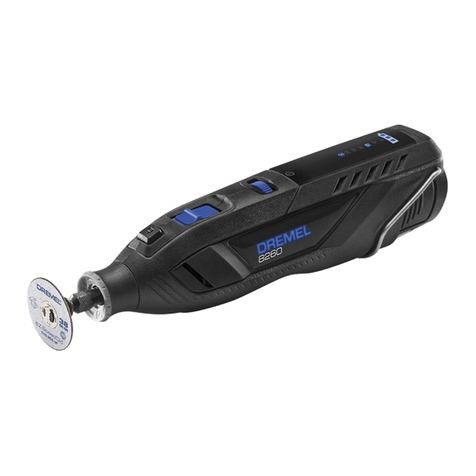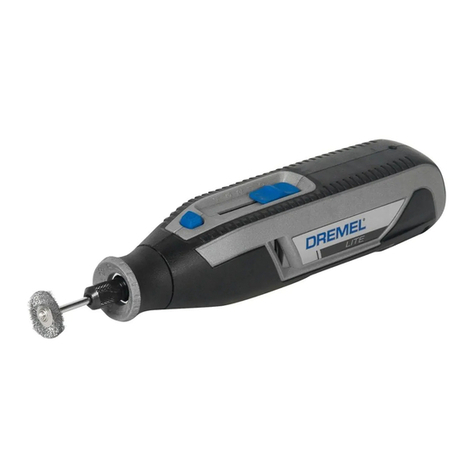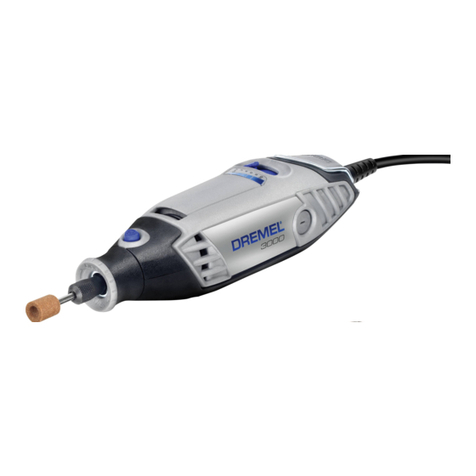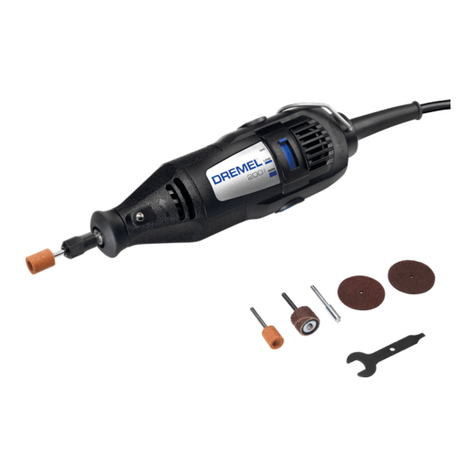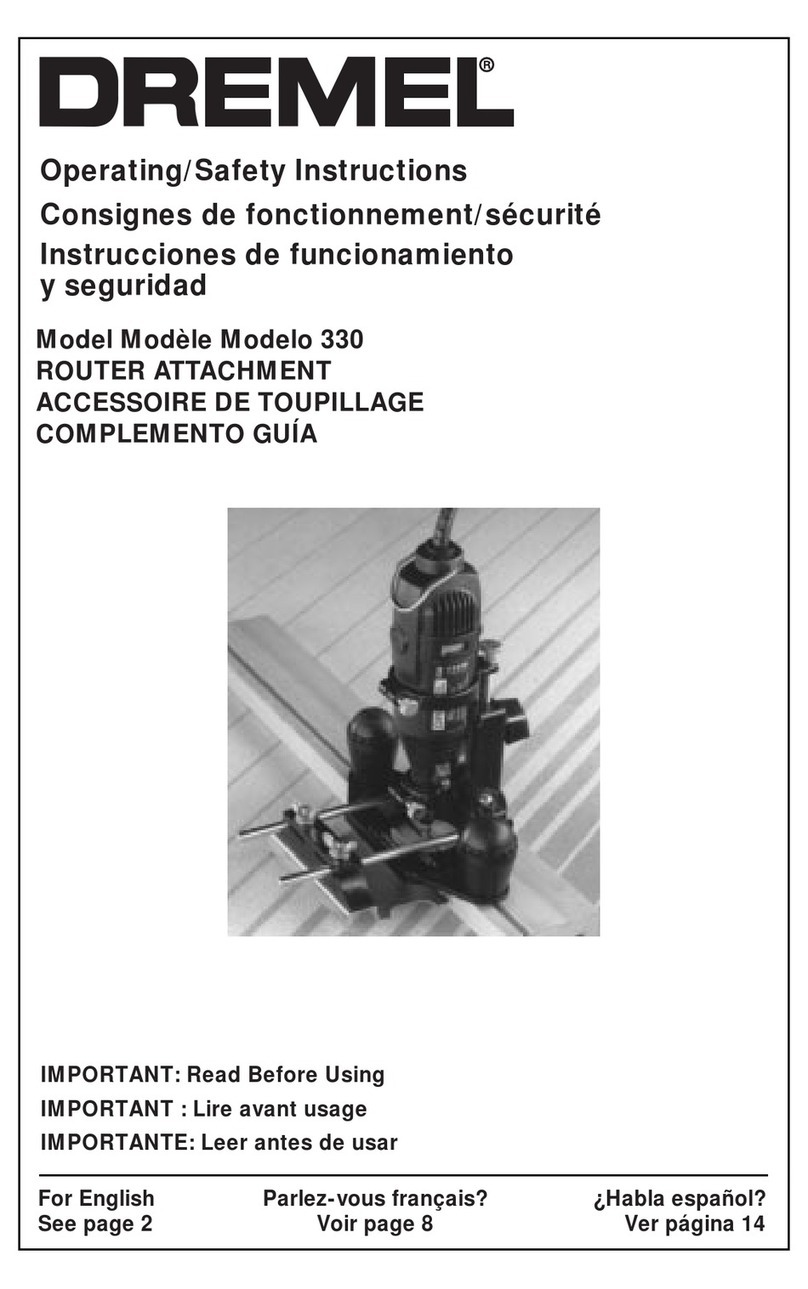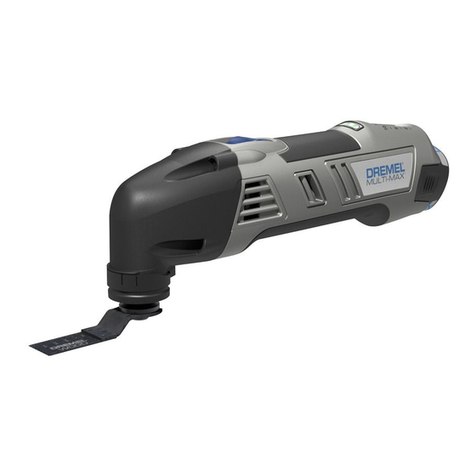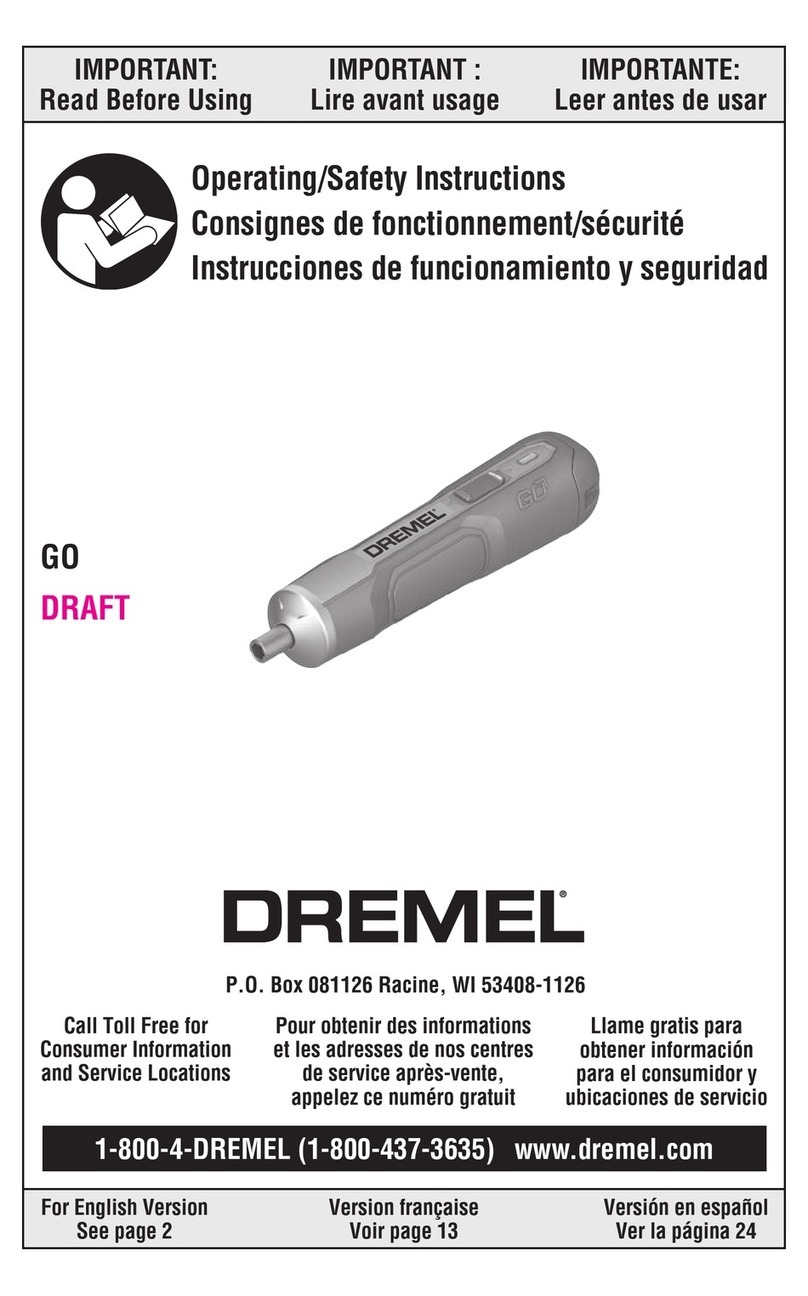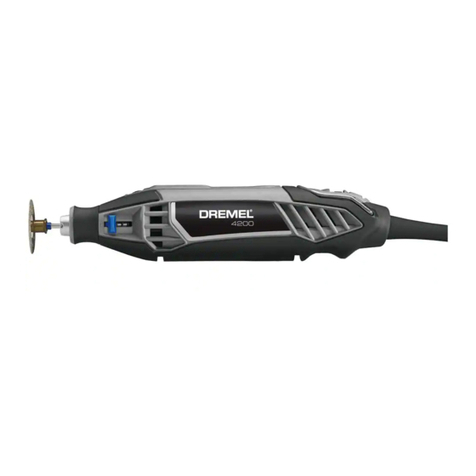7
wire brush for loose or cracked wires. f power tool or
accessory is dropped, inspect for damage or install an
undamaged accessory. After inspecting and installing an
accessory, position yourself and bystanders away from
the plane of the rotating accessory and run the power
tool at maximum no-load speed for one minute. Damaged
accessories will normally break apart during this test time.
h. Wear personal protective equipment. Depending on appli-
cation, use face shield, safety goggles or safety glasses. As
appropriate, wear dust mask, hearing protectors, gloves
and workshop apron capable of stopping small abrasive or
workpiece fragments. The eye protection must be capable
of stopping flying debris generated by various operations.
The dust mask or respirator must be capable of filtrating par-
ticles generated by your operation. Prolonged exposure to
high intensity noise may cause hearing loss.
i. Keep bystanders a safe distance away from work area.
Anyone entering the work area must wear personal protec-
tive equipment. Fragments of workpiece or of a broken
accessory may fly away and cause injury beyond immediate
area of operation.
j. Hold power tool by insulated gripping surfaces only, when
performing an operation where the cutting accessory may
contact hidden wiring. Cutting accessory contacting a “live”
wire may make exposed metal parts of the power tool “live”
and could give the operator an electric shock.
k. Always hold the tool firmly in your hand(s) during the start-
up. The reaction torque of the motor, as it accelerates to full
speed, can cause the tool to twist.
l. Use clamps to support workpiece whenever practical.
Never hold a small workpiece in one hand and the tool in
the other hand while in use. Clamping a small workpiece
allows you to use your hand(s) to control the tool. Round
material such as dowel rods, pipes or tubing have a tenden-
cy to roll while being cut, and may cause the bit to bind or
jump toward you.
m. Position the cord clear of the spinning accessory. f you
lose control, the cord may be cut or snagged and your hand
or arm may be pulled into the spinning accessory.
n. Never lay the power tool down until the accessory has
come to a complete stop. The spinning accessory may grab
the surface and pull the power tool out of your control.
o. After changing the bits or making any adjustments, make
sure the collet nut, chuck or any other adjustment
